Leo Nocentelli is perhaps the greatest rhythm guitarist ever, and damn sure one of the funkiest. Guitar Player made it official by counting him among its 50 Greatest Rhythm Guitarists of All Time, the Grammys honored him with a Lifetime Achievement Award, and countless hip-hop artists have sampled Leo’s licks to power their hits. Nocentelli laid the funky framework for modern New Orleans music in the ‘60s and ’70s as a founding member of the Meters, crafting stank-o-pated riffs to anchor classics such as “Cissy Strut,” “Fire on the Bayou,” and the wah-wah wonder “Just Kissed My Baby.”
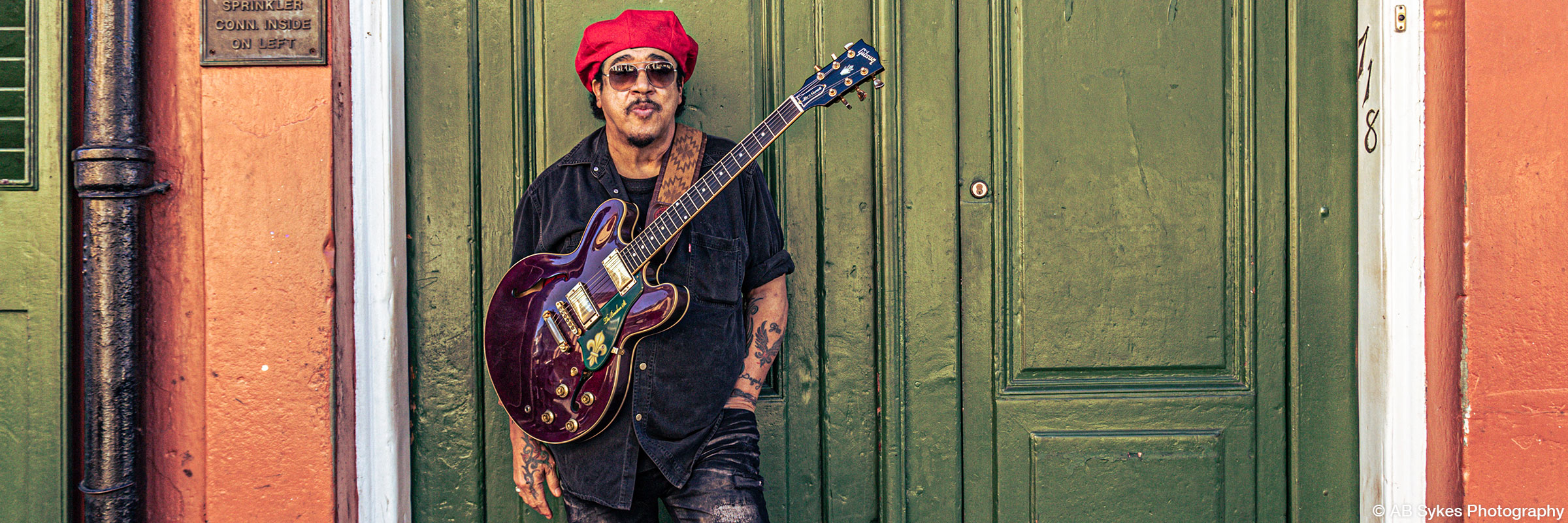
His extensive sideman credits include supporting an array of artists from Patti LaBelle to Dr. John, Robert Palmer and Lee Dorsey. He’s still as clever as ever, and the latest trick from Mr. Bourbon Street’s bag is a real David Copperfield-like reveal. Nocentelli’s debut acoustic solo album—recorded fifty years ago, stashed in the vault at Allen Toussaint’s Sea-Saint Studios, and presumed lost in the flood of Hurricane Katrina—magically appeared at a swap meet in Los Angeles. Released in 2021 as Another Side (Light in the Attic), the record is attracting renewed attention to a bona fide legend.
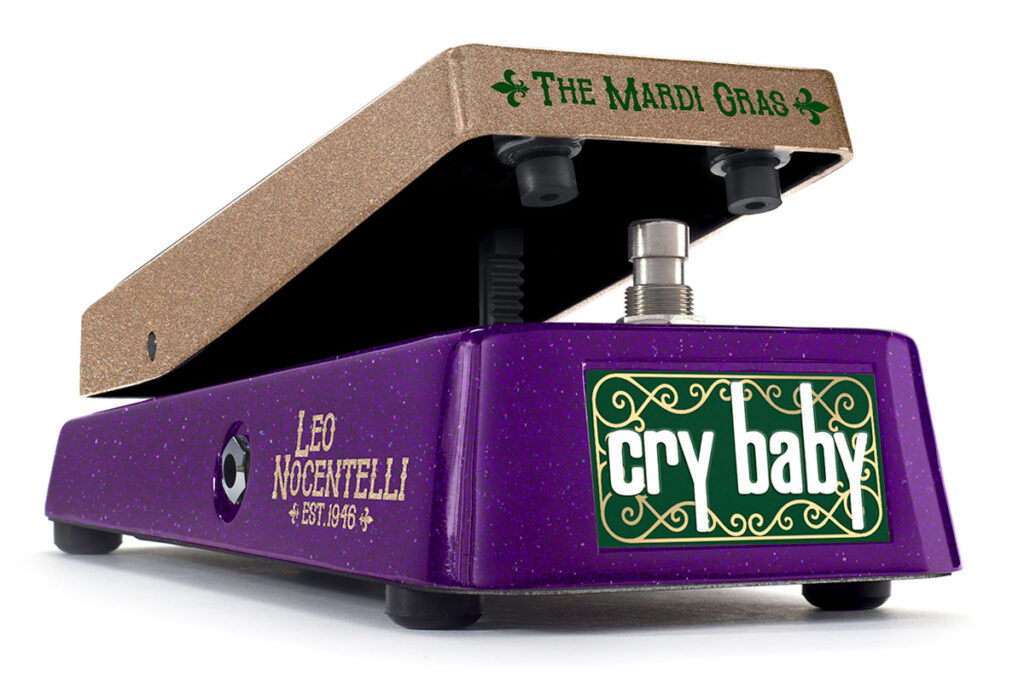
Dunlop has been secretly working with Nocentelli on a bomb signature project for quite a while, as well, and it’s finally time for show and tell. The Leo Nocentelli Mardi Gras Wah is appropriately colored deep purple, green and sparkling gold with custom graphics including a golden fleur-de-lis on the tread, a custom Cry Baby logo at the front, and a classy bottom plate. Like it says on the side, Leo Nocentelli was established in 1946, and he carries a ton of history wherever he goes. We caught up with him at Christmas time feeling full appreciation for the present at home in the Crescent City.
What was the big bang in your wah-wah universe?
I first heard Jimi Hendrix use it on songs like “Machine Gun,” “Voodoo Child” and what he did live at Woodstock. I came to appreciate what some other players did as well, including Robin Trower, but I would pitch Hendrix as the real master of the wah, and I was influenced by him. I bought one that I actually used on the first Meters album for “Here Comes the Meter Man.” It’s a wah-wah solo. I wasn’t into how to use it properly when we recorded that, but as time went on, I started using it more. The song that really brought out the way I interpret the wah-wah was “Just Kissed My Baby.”
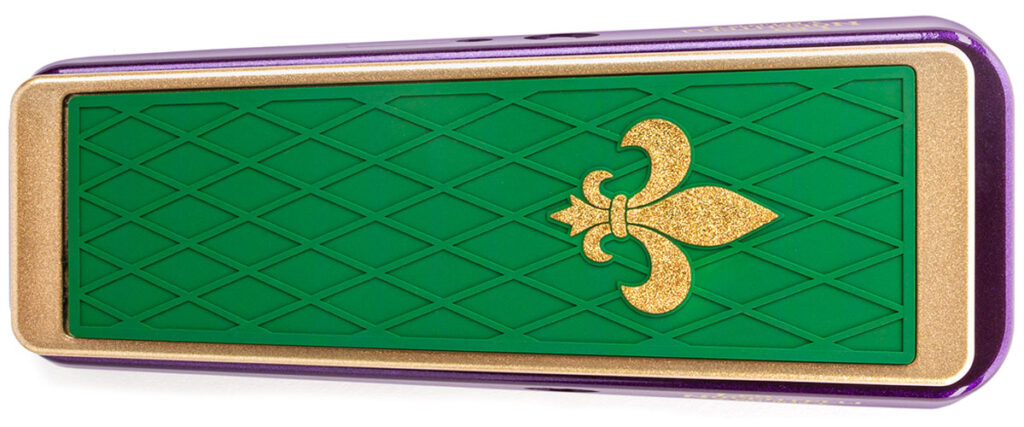
What’s the key?
Meshing it with the line. A lot of people just push it up and down. On “Just Kissed My Baby,” I used it in accordance with the way the line went, pressing forward for the high pitch on the high notes and rocking back for the low ones. It’s very meticulous and very methodical. I play the first part picking only two strings, the second and third. The high E string is never played. It’s in the key of G, and a lot of players just strum the whole chord, but you can’t get it like that.
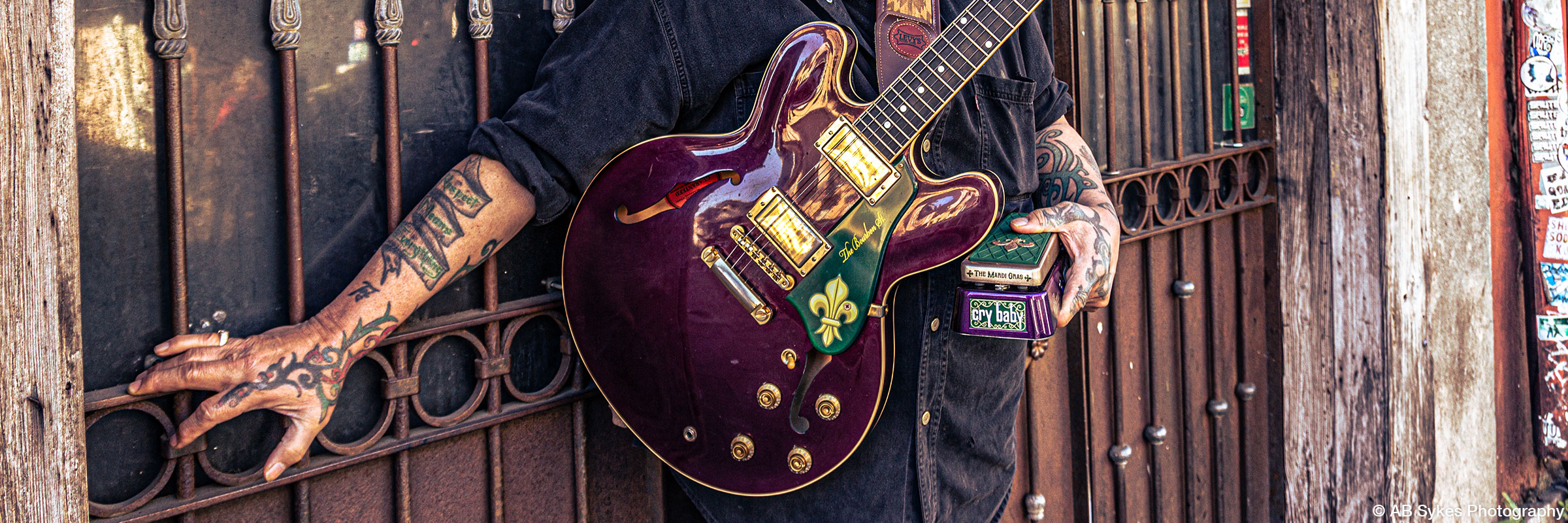
What about the second part of the line that bounces off the low E string?
I pick on the bottom string while alternating with my middle finger plucking the G string.
Was the wah a part of the riff from the beginning?
It all happened together. We were writing and rehearsing for Rejuvenation. Since I was the chief writer, I came up with the lick at rehearsal trying to get the song together. I played the whole song to Zig [drummer Joseph “Zigaboo” Modeliste], and Zig was such a clever lyricist that he immediately started singing, “I feel like a king, ‘cuz I just kissed my baby.” He and I worked the song out, and George [bassist George Porter Jr.] played what came naturally, joining the guitar for the notes on the big E string. The guitar riff without the wah-wah would sound plain. Hitting the right spot at the right time on the Cry Baby Wah makes it come alive.
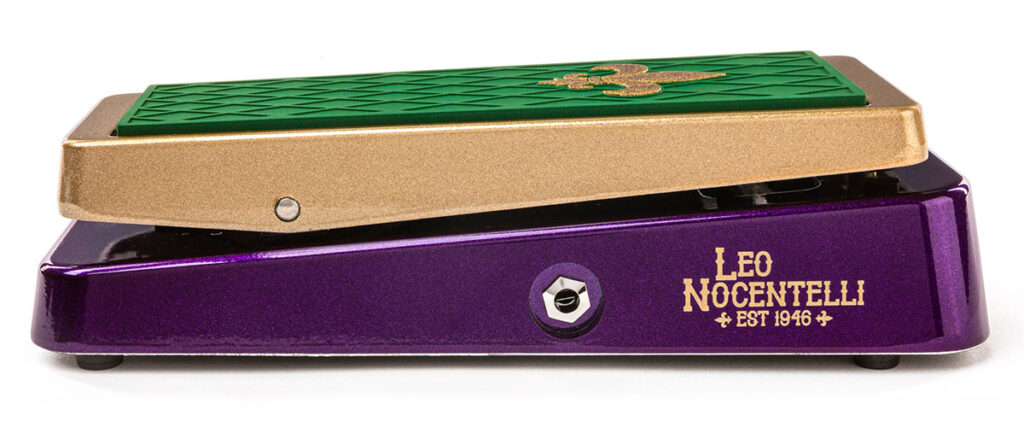
What’s happening on the original recording of “Fire on the Bayou”?
That’s actually one of those big old Phaser II boxes [Musitronics Mu-tron], but some other Meters recordings with the wah-wah are “You’ve Got to Change, (You’ve Got to Reform),” “Getting Funkier All the Time,” and “Stay Away.”
Can you explain what effect the wah has on you and your playing?
It’s a different concept when you play with a wah-wah as opposed to just rocking out. Different riffs automatically come into my head. When you hear me with a wah-wah, I’m still Leo, but it’s like another player within what I normally do. And it takes me to another place when I’m improvising on a solo.
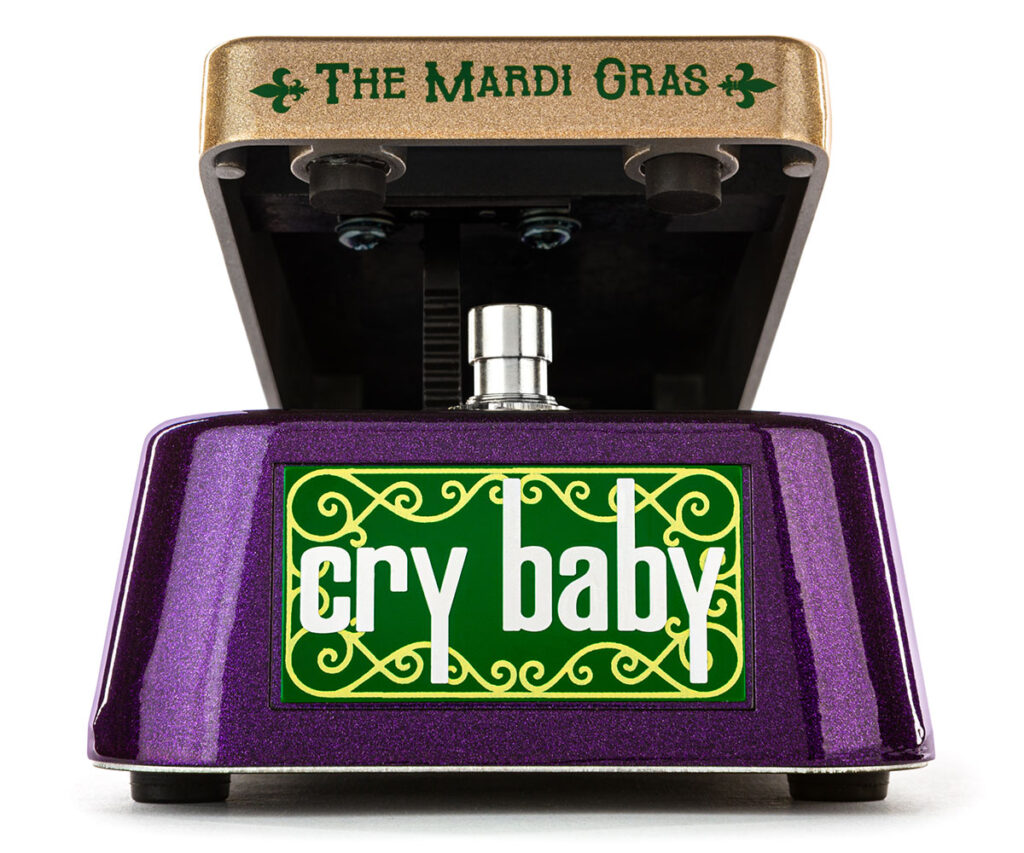
You had been using an older Hendrix Signature Cry Baby, the JH-1, which has a deeper range than a standard Cry Baby. What do you dig most about your new Mardi Gras Wah?
I didn’t want to change the mechanics. I approached Jimmy Dunlop about doing the Mardi Gras Wah, and the significance was using Mardi Gras colors. The original colors were more pastel on the green and gold, and a more regular shade of purple. It took Jimmy a long time and a lot of passion to develop those colors to appear as special as they do now. I applaud him for that, and I’m very grateful and proud of the way they turned out. This is one of the coolest things I’ve ever been involved in.
Is the wah-wah the greatest effects pedal ever invented?
I think so. You can get away without a phaser, an octave divider, or a delay, but you cannot get away without a wah-wah, man.





